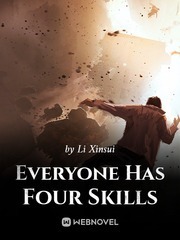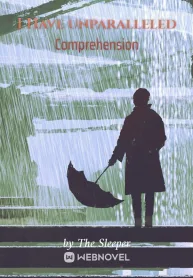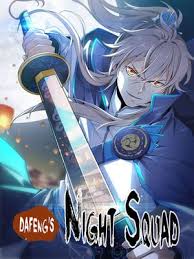Chapter 438 Retreat
Tanks "cracked and rattled" came up, and the German soldiers hurriedly took out anti-tank grenades from the ammunition box.
PWM anti-tank grenade can be said to be the German anti-tank weapon.
After all, there is almost no effective individual anti-tank equipment in this era... When cluster grenades, explosive kits and even incendiary bottles are commonly used to deal with enemy tanks, PWM anti-tank grenades are undoubtedly a very effective anti-tank weapon.
Although its attack distance is not far, if the infantry has a large number of these anti-tank grenades in their hands, it is still a terrible thing for the attacking tanks.
Just imagine, whenever a tank approaches its trench, several anti-tank grenades open a small umbrella at a high place and land on its armor with a burst of explosion, and then the tanks are paralyzed in front of the position.
But this situation will not happen when the 1st Guards Tank Brigade attacks, because they have rocket launchers in their hands, anti-infantry rocket launchers...
Just as the German soldiers were holding anti-tank grenades one by one and getting ready to throw them, they suddenly heard the screams of rockets in the smoke, and then there was a burst of "boom" and screams. .
Anti-infantry rockets are often not lethal, because when they explode, they explode steel **** like the German S-type mines.
But this is often the most effective, because the steel **** are shot everywhere in front of the trenches, and even hit the armor or stones of the tank, and they will bounce back, just like a piece of soybeans, they can come from all kinds of unexpected directions. , Angle shot into the enemy's trenches.
And only need to be hit by a few steel balls, the enemy will at least temporarily lose combat effectiveness or reduce the ability to respond.
At this moment, the tank broke into the attack range of the enemy's anti-tank grenade.
Of course, the Soviet army would not give them a chance to throw anti-tank grenades. When the German army was beaten at a loss, they threw rows of grenades into the trenches, and then rushed up with a shout.
The bayonet saw red, and bullets and shrapnel flew everywhere.
The German 46th Infantry Division fought very bravely. They still did not take half a step back under such circumstances, but relied on trenches and fortifications to fight hand-to-hand with the Soviet army.
If they were facing other troops, they might be intimidated by their arrogance and persistence, but their opponent was the 1st Guards Tank Brigade, which had experienced many battles. The heroic troops of the Battle of Moscow, such a **** battle is nothing but a piece of cake for them.
Especially at this time, the equipment of the Soviet army is still fully dominant: tanks, rocket launchers, Bobosha submachine guns...
Row after row of German soldiers fell under the fire, corpses were crushed under the tracks of the tanks, and the anti-tank guns were blasted into the sky by rockets before they could fire.
This battle is easy, at least for Shulka, because he only needs to use the cover of the tank, and then lean out and knock down a few enemies.
Some of them are Romanian soldiers.
To them, Shulka sometimes didn't know how to face them. After all, these Romanian soldiers had done a great favor to the Soviet army. Killing them at this time felt like "crossing the river and tearing down the bridge".
If there is one side that is the saddest on this battlefield, it is undoubtedly the Romanians who are caught in the middle and are not human. Their deaths may not even be called "sacrifices" because they never To some extent, it is "escape" and "rebellion".
However, the war is so cruel. Romanian soldiers fell under the guns of Shulka, unless one of them raised a white towel and shouted: "Don't shoot, I'm a Russian!"
At this time, the Soviet soldiers will lead it to the back and put on the Soviet uniform, so as not to be accidentally injured by others.
Going further back, what you see is the corpses of German soldiers.
There were very few wounded, because even if they were wounded, they would crawl in the trenches looking for grenades and explosive packs. Some of them even managed to detonate the tanks when they ran over the trenches.
Fewer prisoners, only a few soldiers who looked like children squatted on the ground trembling with their heads under the control of Soviet soldiers.
This is not because the Soviet army does not keep prisoners. This battle can keep prisoners.
It was because not many German troops surrendered, although they knew that it was meaningless to continue to resist like this.
It can also be seen from this that the 46th Division is not a unit that is greedy for life and afraid of death.
Historically they have been treated unfairly...Because of Sponek, they were banned from all rewards, medals and rank promotions for combat.
And they didn't even know what happened, because the order was given by Lieutenant General Sponek, and most officers and soldiers didn't know that it was "disobedience."
Sponek's headquarters was set up five miles behind the defense line, and he received a telegram from the front line immediately.
"General!" The adjutant reported anxiously: "The Russians have broken through our defense line, retreat quickly!"
"Yes, we really want to retreat!" Sponek looked at the map and replied, "But we can't just retreat like this. Otherwise, the troops behind us will be caught off guard by the enemy... Zhankoy is only a hundred or so away from here Kilometers, they only need one day to arrive, we need to buy time for them!"
Therefore, Lieutenant General Sponek led the remnants of the 46th Division to set up ambushes and lay mines all the way while retreating.
This caused a little trouble for the 1st Guards Tank Brigade.
The reason why it is called "little trouble" is because mine-laying is of little significance. The 1st Guards Tank Brigade has mine-sweeping tanks.
The trouble mainly came from the ambush set up by the German army. Suddenly, a few people appeared from the snow on the side of the road and threw anti-tank grenades in the direction of the tank, or fired a few cold shots from a distance.
Objectively speaking, Lieutenant General Sponek's tactics are the most beneficial to the entire battlefield. He can see the whole battle and actively buy time for other troops.
It's just that what he paid didn't seem to have much effect, because the Romanian 8th Cavalry Brigade was stationed behind them.
Most of the cavalry in this era have been transformed into armored troops. They are no longer riding horses but tanks and armored vehicles. They are just called cavalry.
The reason why the Soviet Union still has cavalry is more for snow maneuvering, and the performance of cavalry on the battlefield is still very bad... After the appearance of machine guns, cavalry has no meaning for existence. The greater role of horses in the army is to be able to move some supplies.
The Romanian cavalry brigade is a veritable cavalry, that is, a cavalry equipped with horses and even sabers, hoping to charge the enemy with the fastest speed.
Its nature dictates that such troops are more suitable for offense than defense... and indeed offense is not suitable, because they are all targets.
(end of this chapter)
RECENTLY UPDATES







